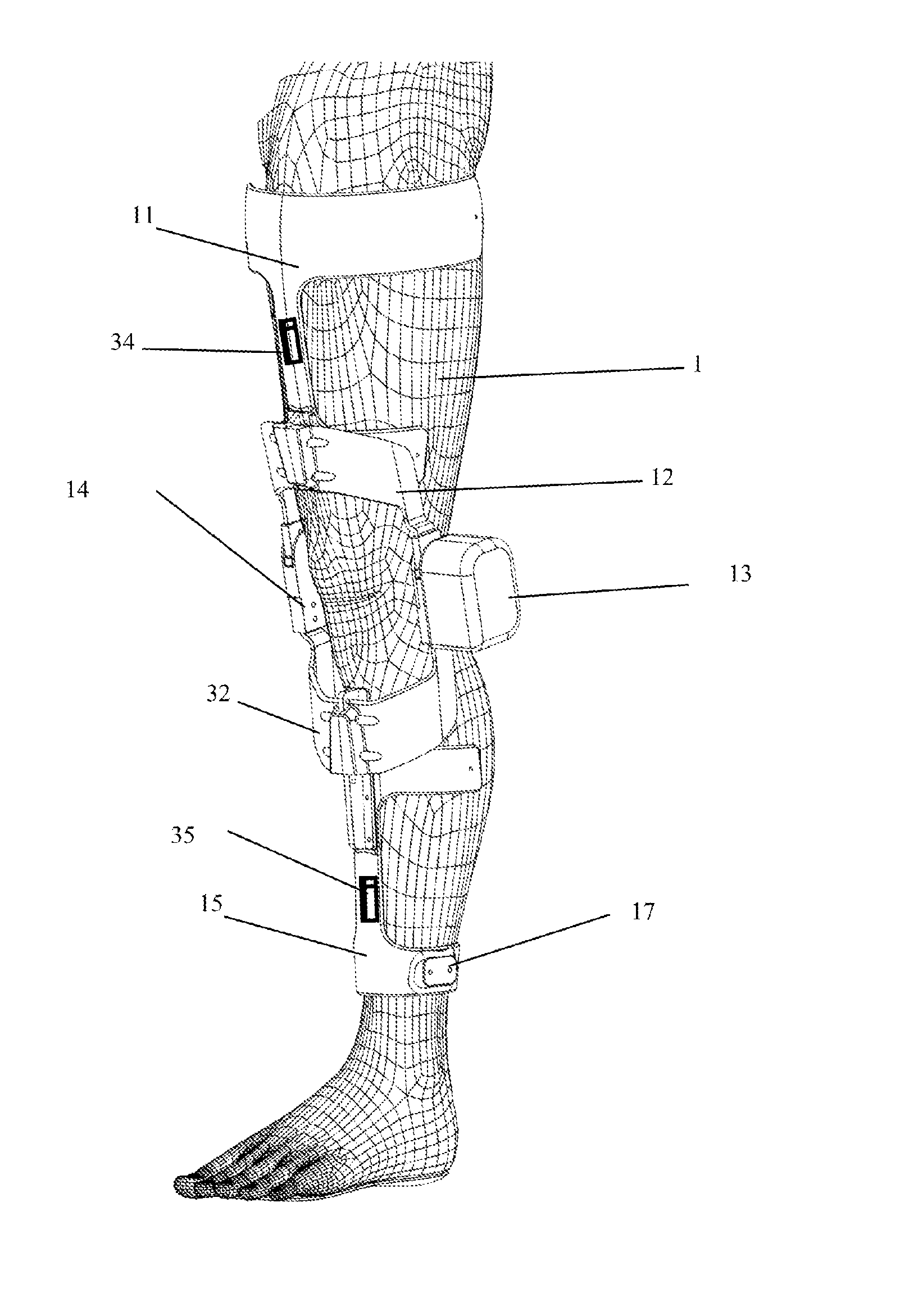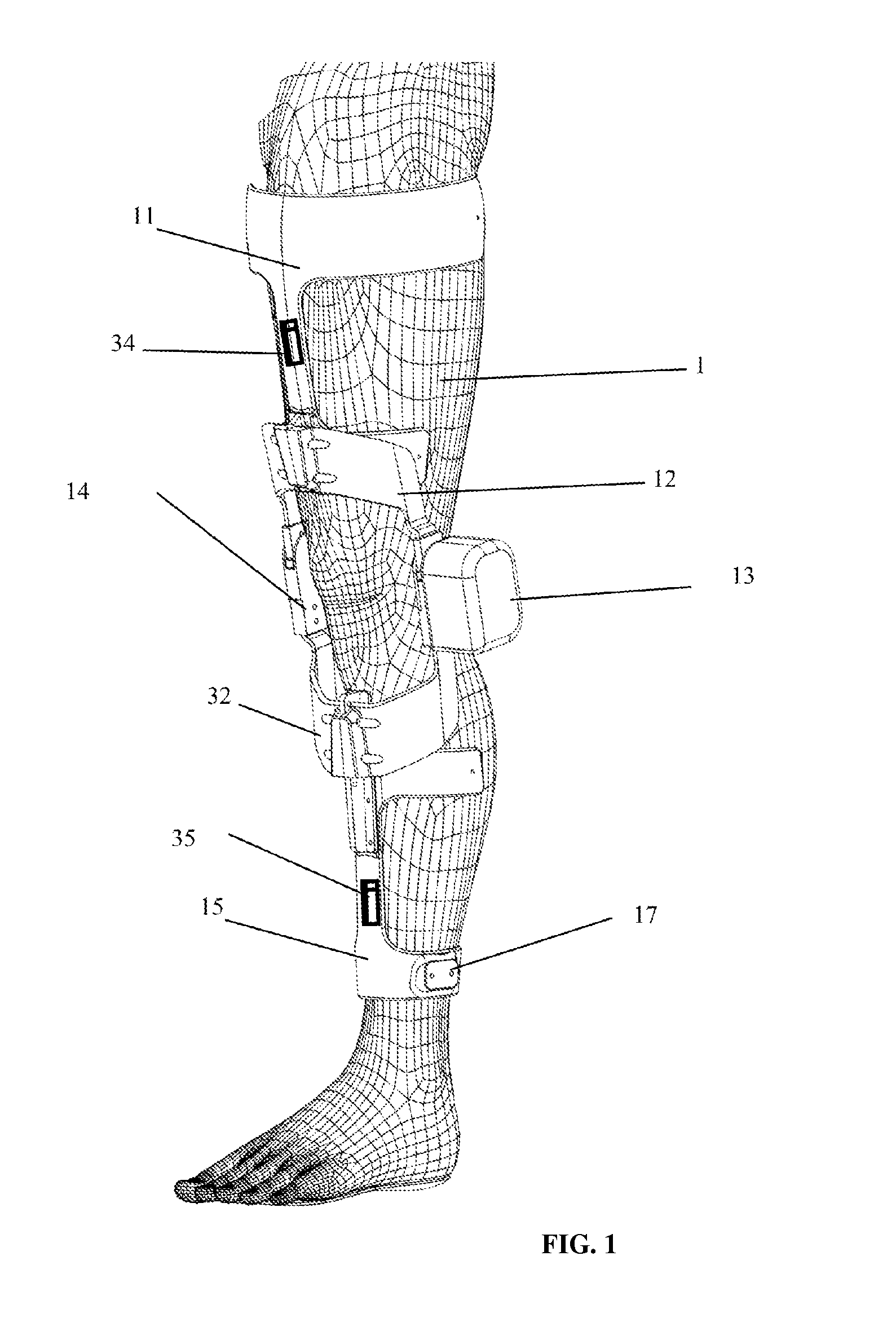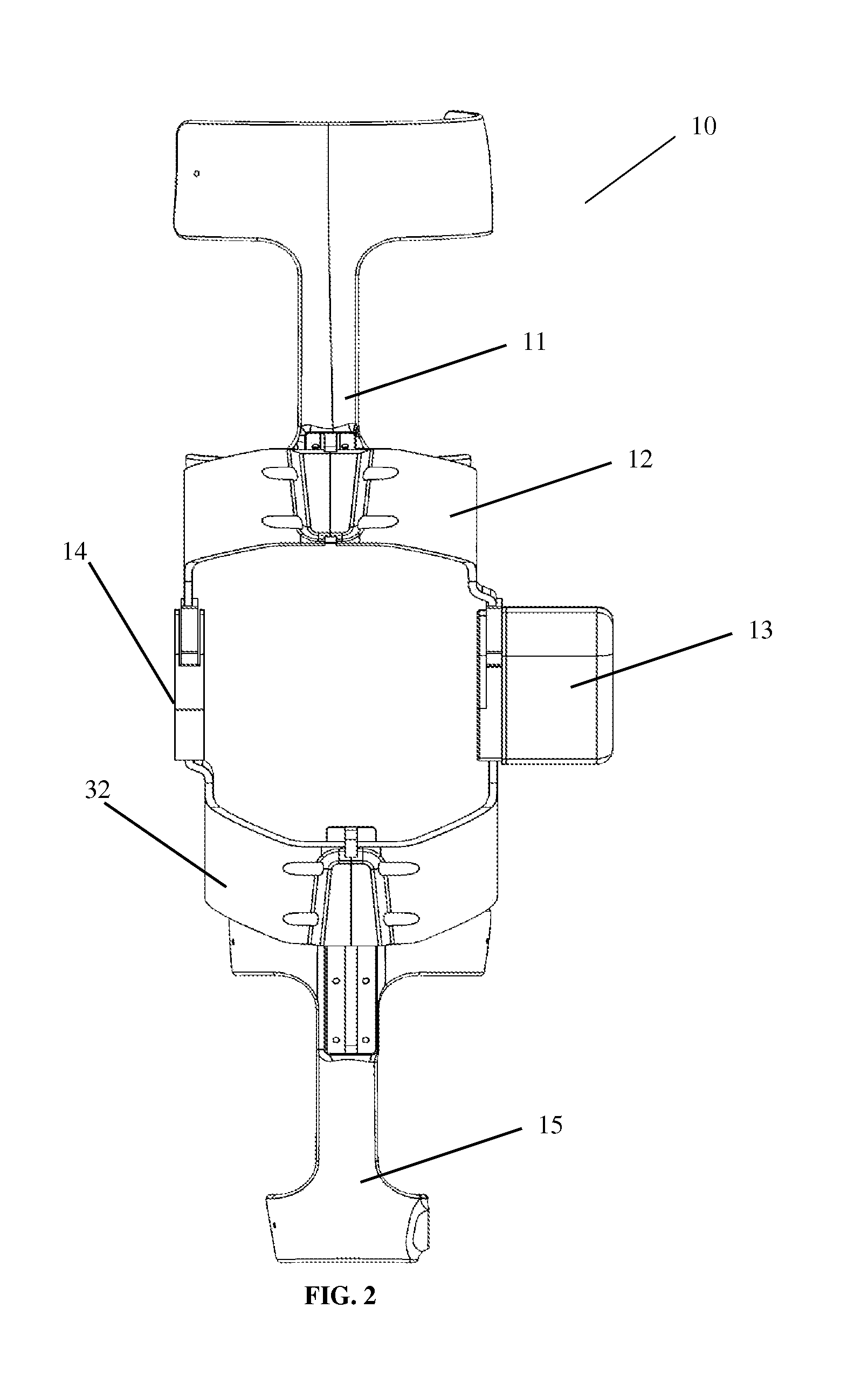Interactive Exoskeleton Robotic Knee System
a robotic knee and robotic technology, applied in the field of wearable interactive devices, can solve the problems of affecting the independency and walking ability of users, the current design of most devices is bulky and heavy, and the lack of active interaction between users and devices, so as to facilitate walking
- Summary
- Abstract
- Description
- Claims
- Application Information
AI Technical Summary
Benefits of technology
Problems solved by technology
Method used
Image
Examples
Embodiment Construction
[0035]In the following description, an interactive exoskeleton knee system for gait training of a user, and the corresponding embodiments are set forth as preferred examples. It will be apparent to those skilled in the art that modifications, including additions and / or substitutions, may be made without departing from the scope and spirit of the invention. Specific details may be omitted so as not to obscure the invention; however, the disclosure is written to enable one skilled in the art to practice the teachings herein without undue experimentation.
[0036]In a first aspect, the rehabilitation system for gait training of the lower limb of a user, the system comprises:
[0037]A support structure, such as an exoskeleton framework, which can be attached to the affected lower limb of the user. The supporting structures align with the anatomical structure (e.g. shank and thigh segments) and is moveably mounted on the user's leg. The system may be adjustable to fit different leg circumfere...
PUM
 Login to View More
Login to View More Abstract
Description
Claims
Application Information
 Login to View More
Login to View More - R&D
- Intellectual Property
- Life Sciences
- Materials
- Tech Scout
- Unparalleled Data Quality
- Higher Quality Content
- 60% Fewer Hallucinations
Browse by: Latest US Patents, China's latest patents, Technical Efficacy Thesaurus, Application Domain, Technology Topic, Popular Technical Reports.
© 2025 PatSnap. All rights reserved.Legal|Privacy policy|Modern Slavery Act Transparency Statement|Sitemap|About US| Contact US: help@patsnap.com



